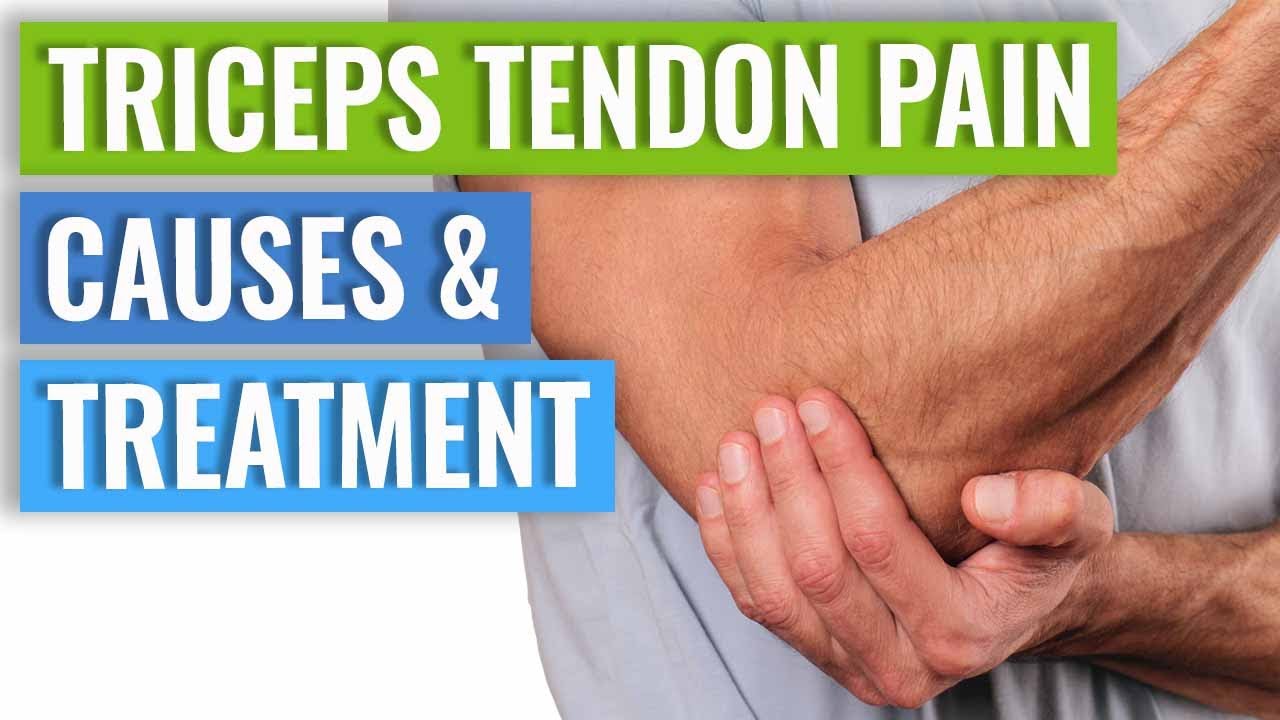Tricep Tendonitis: A Comprehensive Guide
Tricep tendonitis, also known as triceps tendinitis, is a condition that can cause discomfort and limited arm mobility. Whether you’re an athlete, fitness enthusiast, or just curious about this ailment, this guide will provide you with a deep understanding of tricep tendonitis, its causes, symptoms, and effective treatment options.
What is Tricep Tendonitis?

Demystifying Tricep Tendonitis: Definition and Overview
Before we dive into the intricacies of tricep tendonitis, let’s establish what this condition entails. Tricep tendonitis is an inflammation or irritation of the triceps tendon, which connects the triceps muscle to the elbow. This tendon plays a crucial role in the extension of the elbow joint.
Tricep Tendon Anatomy
Exploring Tricep Tendon Structure: Key Insights
To comprehend tricep tendonitis fully, it’s essential to familiarize yourself with the anatomy of the tricep tendons. The triceps muscle consists of three distinct heads: the long head, the lateral head, and the medial head. These muscle heads converge to form the triceps tendon, which inserts into the olecranon process of the ulna, the bone of the forearm.
Causes of Tricep Tendonitis
Uncovering the Triggers: What Leads to Tricep Tendonitis
Tricep tendonitis typically arises due to repetitive stress or overuse of the triceps tendon. Common causes include:
Overexertion:
Engaging in activities that require repetitive tricep movements, such as weightlifting or sports, can lead to tendonitis.
Age and Wear:
Tendonitis risk increases with age as tendons naturally weaken over time.
Poor Technique:
Incorrect exercise form or improper lifting techniques can strain the triceps tendon.
Symptoms and Diagnosis
Detecting Tricep Tendonitis: Symptoms and Diagnostic Approaches
Recognizing tricep tendonitis early is crucial for effective treatment. Common symptoms include:
Pain:
Discomfort in the back of the arm, especially when extending the elbow.
Swelling:
Inflammation or swelling around the triceps tendon.
Weakness:
Reduced strength when extending the arm.
Treatment Options
Addressing Tricep Tendonitis: Effective Treatment Strategies
If you’ve been diagnosed with tricep tendonitis, rest assured that several treatment options are available:
Rest:
Allow your triceps tendon to heal by avoiding activities that exacerbate the condition.
Physical Therapy:
Targeted exercises and stretches can improve tricep strength and flexibility.
Medications:
Nonsteroidal anti-inflammatory drugs (NSAIDs) can help alleviate pain and inflammation.
Injections:
In severe cases, corticosteroid injections may be considered.
FAQs and their answers related to tricep tendonitis:
1. What is tricep tendonitis?
Answer: Tricep tendonitis, also known as triceps tendinitis, is a condition characterized by inflammation or irritation of the triceps tendon, which connects the triceps muscle to the elbow.
2. What are the common causes of tricep tendonitis?
Answer: Tricep tendonitis is often caused by overuse, repetitive arm movements, poor lifting techniques, or sudden increases in physical activity.
3. What are the typical symptoms of tricep tendonitis?
Answer: Symptoms include pain at the back of the upper arm near the elbow, swelling, weakness in the triceps, and limited range of motion in the elbow.
4. How is tricep tendonitis diagnosed?
Answer: Diagnosis involves a physical examination, medical history review, and sometimes imaging tests like ultrasound or MRI to confirm the condition.
5. What are the treatment options for tricep tendonitis?
Answer: Treatment may include rest, ice, physical therapy, anti-inflammatory medications, corticosteroid injections, and in severe cases, surgery.
6. Can tricep tendonitis heal on its own?
Answer: In mild cases, with proper rest and self-care, tricep tendonitis may improve on its own. However, it’s essential to seek medical advice for a proper evaluation.
7. How long does it take to recover from tricep tendonitis?
Answer: Recovery time varies, but mild cases may improve within a few weeks, while more severe cases may take several months of treatment and rehabilitation.
8. Are there any exercises that can help prevent tricep tendonitis?
Answer: Strengthening exercises for the triceps, along with proper warm-ups and stretching, can help reduce the risk of tricep tendonitis.
9. Can I continue working out with tricep tendonitis?
Answer: It’s best to avoid activities that exacerbate the pain. Consult a healthcare professional for guidance on safe exercises during recovery.
10. Is tricep tendonitis a chronic condition?
Answer: Tricep tendonitis can become chronic if left untreated or if there is repeated overuse or injury. Early intervention is key to preventing chronic issues.
conclusion
Tricep tendonitis is a condition characterized by inflammation or irritation of the triceps tendon, commonly caused by overuse or repetitive arm movements. Its symptoms include pain near the elbow, swelling, weakness, and limited range of motion. Diagnosis involves a physical examination and sometimes imaging tests, and treatment options include rest, ice, physical therapy, medications, injections, and, in severe cases, surgery. Recovery time varies but can range from weeks to months. It’s essential to seek professional medical guidance for proper evaluation and management of tricep tendonitis to prevent potential chronic issues.




